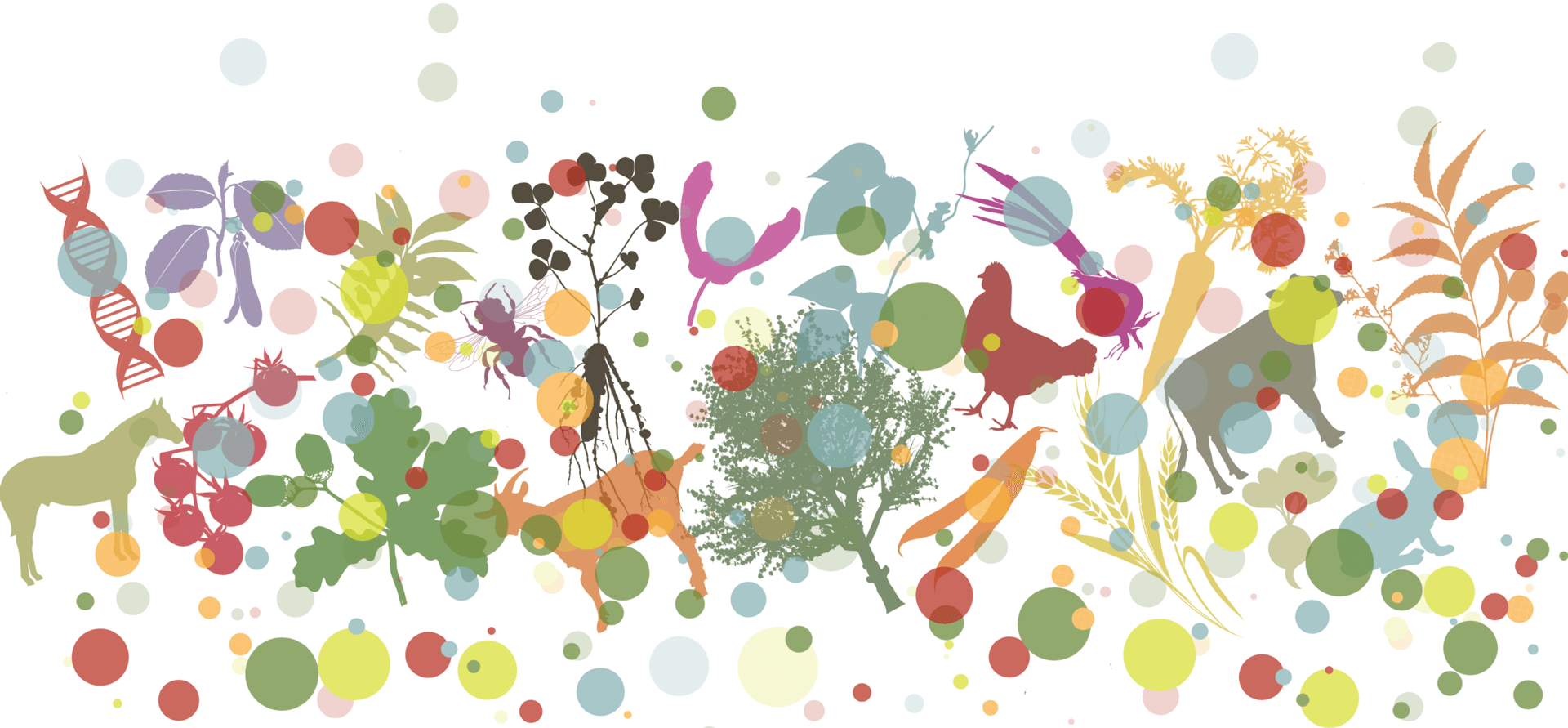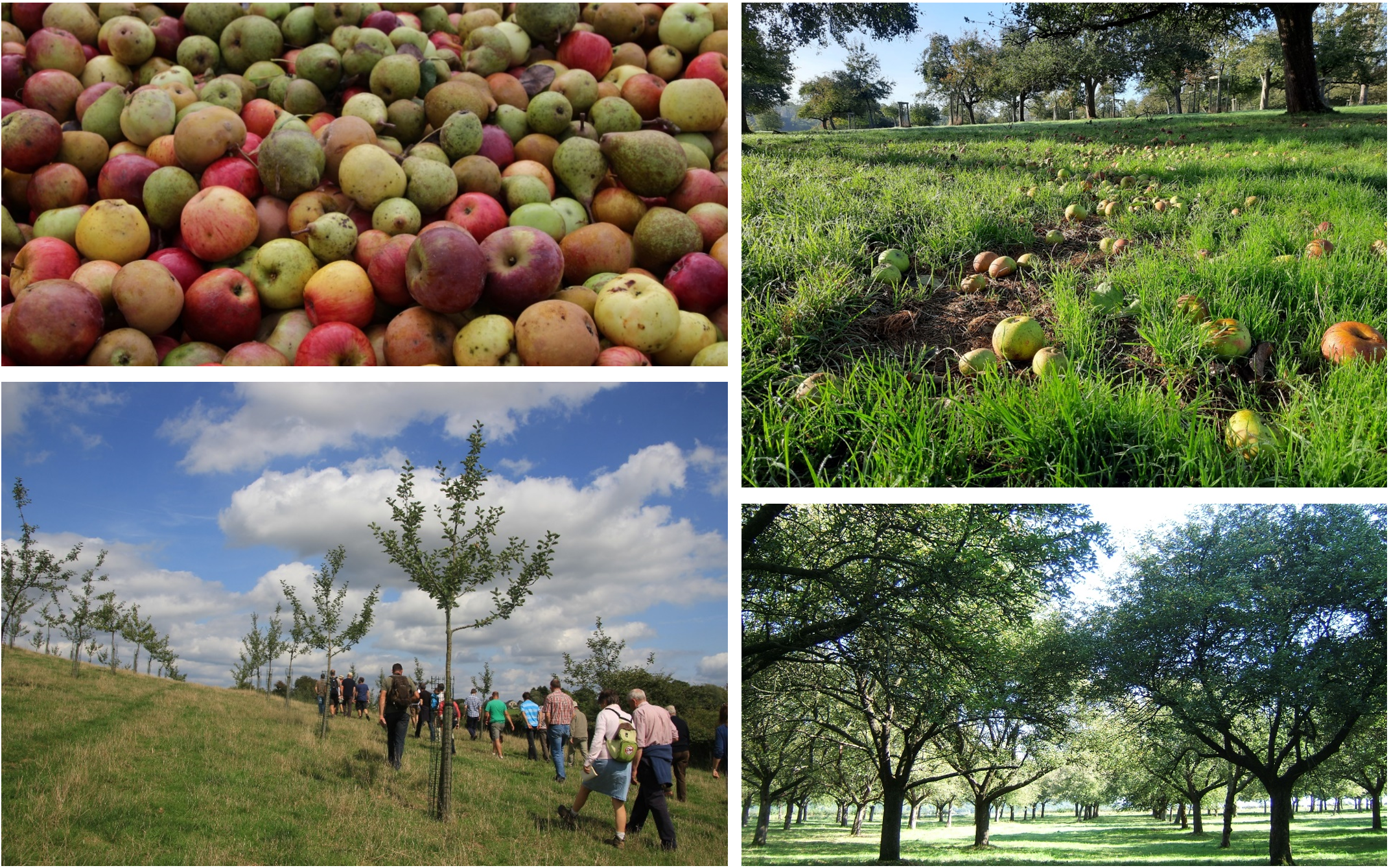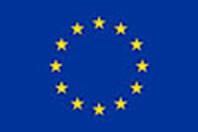Safeguarding, evaluating and valorizing fruit tree genetic resources in Belgium: Insights from nearly half a century of unsprayed orchard management
Main Article Content
Abstract
In response to the rapid genetic erosion threatening Belgium's fruit tree cultivar heritage, the Walloon Agricultural Research Centre (CRA-W, Gembloux, Belgium) initiated nationwide prospection campaigns in 1975 with support from citizens. These campaigns aimed to collect and conserve the country’s highly diverse fruit tree genetic resources (FTGR), including historically significant amateur-bred and landrace cultivars, for future breeding efforts. Since then, the CRA-W has maintained a diverse collection – primarily apples (1,629 accessions) and pears (1,198 accessions), but also cherries (355 accessions), plums (236 accessions), grapes (98 accessions), and peaches (29 accessions) – in ex situ unsprayed repository and experimental evaluation orchards. This approach makes it possible to assess these cultivars for multiple traits related to their tolerance and adaptability to biotic and abiotic stresses. This long-term evaluation method enables the identification of numerous quantitative traits and their impact on robustness and stress tolerance. Moreover, CRA-W has actively sought ways to promote the sustainable use of FTGR through partnerships with public institutions, private stakeholders and citizens. One key initiative was the gradual establishment of a nursery network governed by a participatory fruit tree quality charter, coupled with a traceability system for high-quality propagation material. This initiative led to the release of 33 well-performing heritage cultivars, notable for their sufficient robustness and disease tolerance, for use in both amateur and professional orchards. A decade later, a dedicated apple pre-breeding and breeding programme was launched to harness the extensive FTGR collection as a source of quantitative disease tolerance, robustness and quality traits.
Article Details

This work is licensed under a Creative Commons Attribution 4.0 International License.
Authors retain copyright of the articles published in Genetic Resources and grant the journal right of first publication with open access. All articles published in Genetic Resource are licensed under Creative Commons Attribution 4.0 International License (CC BY 4.0) that allows others to download, share and adapt the work for commercial and non-commercial purposes as long as proper attribution to the original article is given. Genetic Resources permits and encourages authors to post items submitted to the journal (including the publisher's final layout) on personal websites or institutional repositories after acceptance and/or publication, while providing bibliographic details that credit their publication in Genetic Resources.
Bellon, M R, E Gotor, and F Caracciolo (2015). “Assessing the effectiveness of projects supporting on-farm conservation of native crops: evidence from the high Andes of South America”. World Development 70, pp. 162–176. DOI: https://doi.org/10.1016/j.worlddev.2015.01.014. DOI: https://doi.org/10.1016/j.worlddev.2015.01.014
Blommers, L H M (1983). “Collecting and preserving apple and pear cultivars in The Netherlands. In : Symposium on fruit Cultivars in Western Europe”. Acta Horticulturae 142, pp. 15–22. DOI: https://doi.org/10.17660/ActaHortic.1983.142.2. DOI: https://doi.org/10.17660/ActaHortic.1983.142.2
Bramel, P J and G Volk (2019). A global strategy for the conservation and use of apple genetic resources. Bonn, Germany: Global Crop Diversity Trust. DOI: https://doi.org/10.13140/RG.2.2.34072.34562.
Camacho-Villa, T C et al. (2005). “Defining and identifying crop landraces”. Plant Genetic Resources 3(3), pp. 373–384. DOI: https://doi.org/10.1079/PGR200591. DOI: https://doi.org/10.1079/PGR200591
Corbaz, R (1983). “Orchards of the past to enrich those of the future. In: Symposium on Fruit Cultivars in Western Europe. Jenkins (Conv.).” Acta Horticulturae 142, pp. 23–30. DOI: https://doi.org/10.17660/ActaHortic.1983.142.3. DOI: https://doi.org/10.17660/ActaHortic.1983.142.3
Dapena, E (1996). Comportamiento agronomico y tecnológico de variedades de manzano asturianas. url: http://hdl.handle.net/10651/13568.
Dotlacil, L et al. (1994). “Plant Genetic Resources in the Czech Republic”. In: Proceeding of a joint. FAO/IPGRI Workshop on ex situ Germplasm Conservation. Frison, pp. 38–44.
Durel, C. -E et al. (2023). “MUNQ and PUNQ - a European and international apple and pear germplasm coding system”. Acta Hortic 1384, pp. 471–476. DOI: https://doi.org/10.17660/ActaHortic.2023.1384.59. DOI: https://doi.org/10.17660/ActaHortic.2023.1384.59
ECPGR (1984). UNDP/IBPGR European Cooperative Programme for Conservation and Exchange of Crop Genetic Resource, Phase II, Report of the Second Meeting of a Technical Consultative Committee, Oeiras, Portugal, 3-5 December 1984. URL: https://www.ecpgr.org/fileadmin/templates/ecpgr.org/upload/SC_reports/SC2_Report.pdf.
Engels, J M M, L Maggioni, and E Lipman (2019). Assessing current practices and procedures to strengthen AEGIS, the initiative for A European Genebank Integrated System. Report of a Workshop, 10-12 December 2018, San Fernando de Henares, Madrid, Spain. Rome, Italy: European Cooperative Programme for Plant Genetic Resources, pp. 10–12. URL: https://www.ecpgr.org/resources/ecpgr-publications/publication/assessing-current-practices-and-procedures-to-strengthen-aegis-the-initiative-for-a-european-genebank-integrated-system-2019.
EU (2008). Council Directive 2008/90/EC of 29 September 2008 on the marketing of fruit plant propagating material and fruit plants intended for fruit production (Recast version). URL: http://data.europa.eu/eli/dir/2008/90/oj.
EU (2014). Commission Implementing Directive 2014/96/EU of 15 October 2014 on the requirements for the labelling, sealing and packaging of fruit plant propagating material and fruit plants intended for fruit production, falling within the scope of Council Directive 2008/90/EC. URL: http://data.europa.eu/eli/dir_impl/2014/96/oj.
EU (2018). Regulation (EU) 2018/848 of the European Parliament and of the Council of 30 May 2018 on organic production and labelling of organic products and repealing Council Regulation (EC) No 834/2007. URL: http://data.europa.eu/eli/reg/2018/848/oj.
Höfer, M, H Flachowsky, and M Hanke (2019). “German Fruit Genebank - looking back 10 years after launching a national network for sustainable preservation of fruit genetic resources”. Journal für Kulturpflanzen 71(2/3), pp. 41–51. DOI: https://doi.org/10.5073/JfK.2019.02-03.01.
Horvath, L and G Szabo (1997). “Handling evaluation data”. In: Central Crop Databases: Tools for Plant Genetic Resources Management. Ed. by E Lipman et al. url: https://www.ecpgr.org/fileadmin/bioversity/publications/pdfs/351_Central_crop_databases.pdf, pp. 40–47.
Jacques, D et al. (2009). “Natural distribution and variability of wild apple (Malus sylvestris Mill.) in Belgium”. Belgian Journal of Botany 142(1), pp. 39–49.
Kellerhals, M et al. (2012). “European pome fruit genetic resources evaluated for disease Resistance”. Trees-Structure and Functions 26, pp. 179–189. DOI: https://doi.org/10.1007/s00468-011-0660-9. DOI: https://doi.org/10.1007/s00468-011-0660-9
Keulemans, W, I Roldan-Ruiz, and M Lateur (2007). Studying apple biodiversity: opportunities for conservation and sustainable use of genetic resources - (APPLE). Bruxelles: Belgian Sciences Policy, p. 110. URL: https://purews.inbo.be/ws/portalfiles/portal/280245/182002.pdf.
Lateur, M (1999a). “Evaluation et caractérisation des ressources génétiques d’arbres fruitiers”. In: Le patrimoine fruitier. Hier, aujourd’hui, demain. Ed. by M Chauvet. Paris: AFCEV, BRG, INRA, pp. 167–177.
Lateur, M (1999c). “Principaux descripteurs pour l’évaluation et la caractérisation de variétés du prunier européen”. In: Variétés anciennes d’arbres fruitiers peu sensibles aux maladies, diffusées sous le sigle "RGF" par le Département Lutte biologique & Ressources phytogénétiques. Ed. by M Lateur. Gembloux: Cent. Rech. Agron. Etat.
Lateur, M (2001). Evaluation de la résistance au chancre européen (Nectria galligena Bres.) de ressources génétiques du pommier (Malus domestica Borkh.) : étude méthodologique.
Lateur, M (2003). “The integration of different sectors is a key factor for the conservation, the evaluation and the utilisation of our Belgian fruit tree biodiversity”. Bulletin de l’Institut Royal des Sciences Naturelles de Belgique - Biologie, pp. 85–95.
Lateur, M (2010). “Phenotypic & Molecular Characterisation of Prunus Genetic Resources”. In: Report of a Working Group on Prunus. Eighth Meeting, 7-9 Sept. 2010. Ed. by L Maggioni et al. url: https://www.ecpgr.org/resources/ecpgr-publications/publication/report-of-a-working-group-on-prunus-3-2011. Bioversity International, pp. 18–19.
Lateur, M, J Blazek, and E Lipman (2002). “Evaluation descriptors for Malus”. In: Report of a Working Group on Malus/Pyrus. Second Meeting, 2-4 May 2002, Dresden-Pillnitz. Ed. by L Maggioni et al. url: https://www.ecpgr.org/resources/ecpgr-publications/publication/report-of-a-working-group-on-malus-pyrus-1-2004. Rome, Italy: International Plant Genetic Resources Institute, pp. 76–82.
Lateur, M, E Dapena, et al. (2022). ECPGR Characterization and Evaluation Descriptors for Apple Genetic Resources. European Cooperative Programme for Plant Genetic Resources. Rome, Italy. URL: https://www.ecpgr.org/resources/ecpgr-publications/publication/ecpgr-characterization-and-evaluation-descriptors-for-apple-genetic-resources-2022.
Lateur, M, B Lefrancq, and C Wagemans (2000). “Influence of scab inoculum concentration in an apple breeding programme focused on quantitative resistance”. Acta Hortic 538, pp. 249–255. DOI: https://doi.org/10.17660/ActaHortic.2000.538.43. DOI: https://doi.org/10.17660/ActaHortic.2000.538.43
Lateur, M and C Populer (1996). “Evaluation and identification methods used for apple genetic resources at the State Plant Pathology Station in Gembloux”. In: European Malus Germplasm. Ed. by H J Case. url: https://www.ecpgr.org/resources/ecpgr-publications/publication/european-malus-germplasm-1996. Rome: ECP/GR, IPGRI, pp. 78–87.
Lateur, M, D Szalatnay, et al. (2022). ECPGR Characterization and Evaluation Descriptors for Pear Genetic Resources. European Cooperative Programme for Plant Genetic Resources. Rome, Italy. URL: https://www.ecpgr.org/resources/ecpgr-publications/publication/ecpgr-characterization-and-evaluation-descriptors-for-pear-genetic-resources-2022.
Lateur, M, C Wagemans, and C Populer (1999b). “Evaluation of fruit tree genetic resources: use of the better performing cultivars as sources of polygenic scab resistance in an apple breeding programme”. Acta Horticulturae 484, pp. 35–42. DOI: https://doi.org/10.17660/ActaHortic.1998.484.2. DOI: https://doi.org/10.17660/ActaHortic.1998.484.2
Leterme, E (1983). “Local varieties of fruit-trees: preservation and appraisal of their agronomic characters. In : Symposium on Fruit Cultivars in Western Europe. ” Acta Horticulturae 142, pp. 63–65. DOI: https://doi.org/10.17660/ActaHortic.1983.142.6. DOI: https://doi.org/10.17660/ActaHortic.1983.142.6
Muranty, H, C Denancé, L Feugey, et al. (2020). “Using whole-genome SNP data to reconstruct a large multi-generation pedigree in apple germplasm”. BMC Plant Biol 20(2). DOI: https://doi.org/10.1186/s12870-019-2171-6. DOI: https://doi.org/10.1186/s12870-019-2171-6
Muranty, H, C Denancé, A Petiteau, et al. (2024). “Proposition of an SNP set to replace SSRs for standardized cultivar identification in apple”. Acta Hortic 1412, pp. 25–32. DOI: https://doi.org/10.17660/ActaHortic.2024.1412.4. DOI: https://doi.org/10.17660/ActaHortic.2024.1412.4
Negri, V, N Maxted, and M Veteläinen (2009). “European Landrace Conservation: An Introduction”. In: European Landraces: On-Farm Conservation, Management and Use. Vol. 15. Bioversity Technical Bulletins. url: https://hdl.handle.net/10568/106154. Rome, Italy: Bioversity International, pp. 1–22.
Oger, R and M Lateur (2004). “Development of a specific software for the management of the recurrent synonymous problem of cultivars inside plant genetic resources databases: the case of the European ECP/GR Pyrus database”. Acta Hortic 663, pp. 593–597. DOI: https://doi.org/10.17660/ActaHortic.2004.663.104. DOI: https://doi.org/10.17660/ActaHortic.2004.663.104
Populer, C (1975). Résistance du pommier et du poirier aux maladies cryptogamiques. Rapport d’activité 1975. Gembloux: Centre de Recherches Agronomiques, p. 37.
Populer, C (1979). Liste des anciennes variétés de poiriers et de pommiers réunies à la Station de Phytopathologie, Note technique 3/20. Gembloux: Centre de Recherches Agronomiques de l’Etat, p. 70.
Populer, C (1980). “Old apple and pear varieties-What for?” UPOV Newsletter 23, pp. 9–33. URL: https://www.upov.int/edocs/pubdocs/en/upov_pub_438_23.pdf.
Populer, C, M Lateur, and C Wagemans (1998). “Ressources génétiques et résistance aux maladies des arbres fruitiers”. Biotechnologies, Agronomie, Société et Environnement 2(1), pp. 46–58.
Reed, B M et al. (2004). International Plant Genetic Resources Institute; Technical Guidelines for the Management of Field and In Vitro Germplasm Collections. Rome, Italy: Bioversity International, pp. 92–9043. URL: https://hdl.handle.net/10568/105045.
Rümker, K von (1908). “Die systematische Einteilung und Benennung der Getreidesorten für praktische Zwecke”. Jahrbuch der Deutschen landwirtschafts-Gesellschaft 23, pp. 137–167.
Serrie, M et al. (2024). “Dare to be resilient: the key to future pesticide-free orchards?” Journal of Experimental Botany 75(13), pp. 3835–3848. DOI: https://doi.org/10.1093/jxb/erae150. DOI: https://doi.org/10.1093/jxb/erae150
Stalker, H T and C Chapman (1989). “Principles of Germplasm Evaluation”. In: Scientific Management of Germplasm: Characterization, Evaluation and Enhancement. Rome: International Board for Plant Genetic Resources, pp. 55–60.
Stievenard, R (1999). “Bilan d’une expérimentation de relance de variétés fruitières locales dans le Nord de la France”. In: Le patrimoine fruitier - Hier, aujourd’hui, demain. Ed. by M Chauvet. Paris: AFCEV, BRG, INRA, pp. 231–243.
Villette, I, M Lateur, and L Delpierre (2003). “Création d’un réseau wallon de conservation in situ de ressources génétiques fruitières”. Bulletin de l’Institut Royal des Sciences Naturelles de Belgique - Biologie 73, pp. 97–101.
Volk, G M et al. (2015). “The vulnerability of U.S. apple (Malus) genetic resources”. Genet. Resources Crop Evol 62, pp. 765–794. DOI: https://doi.org/10.1007/s10722-014-0194-2. DOI: https://doi.org/10.1007/s10722-014-0194-2
von Rümker, K. (1908). Die systematische Einteilungund Benennung der Getreidesorten für praktische Zwecke. Jahrbuch der Deutschen landwirtschafts-Gesellschaft 23, 137–167.







 This journal has been conceived as part of the
This journal has been conceived as part of the